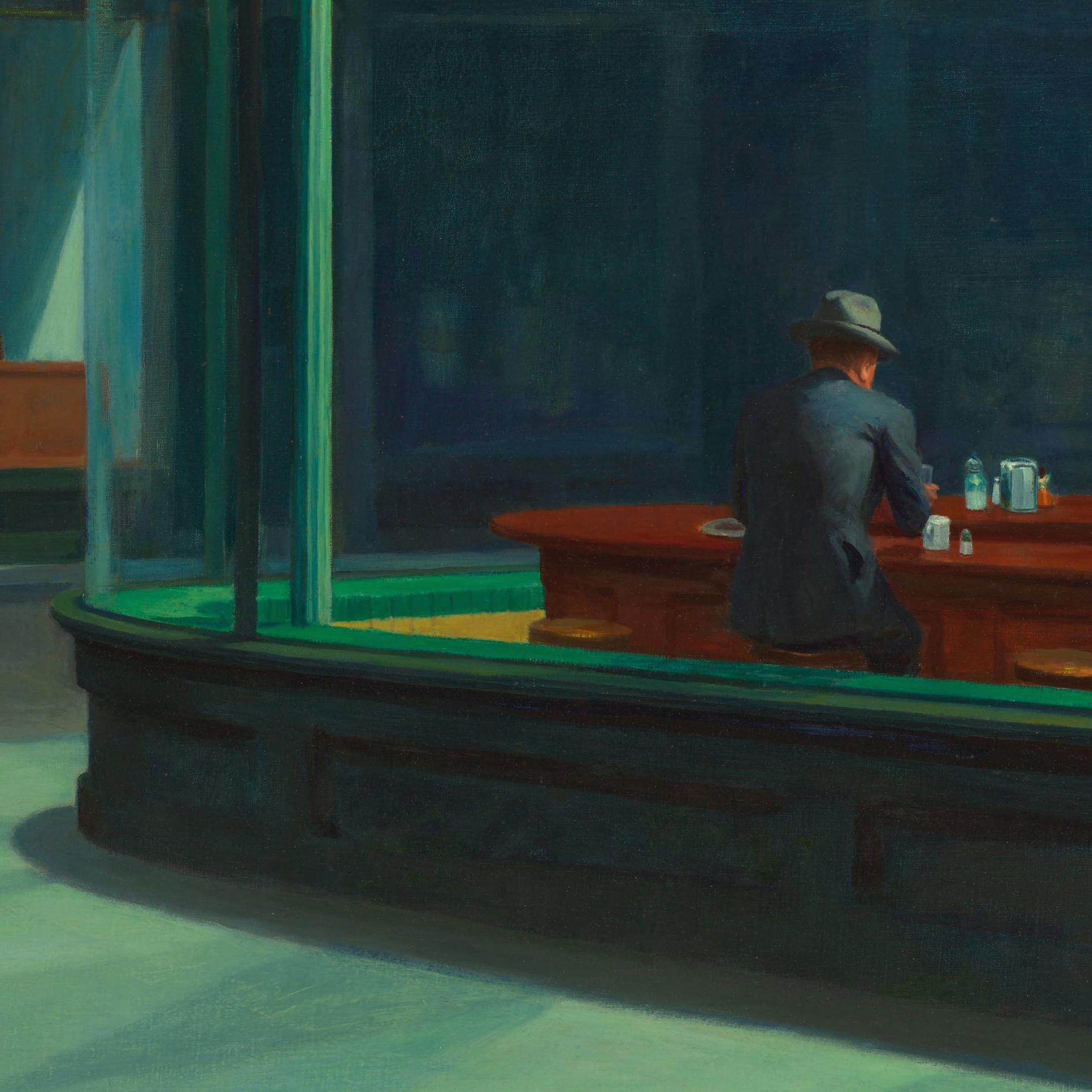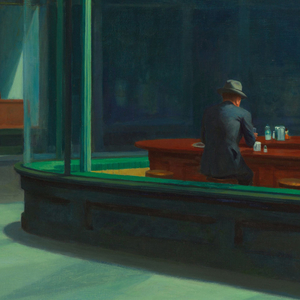Mean Streets and The 24/7 Diner – Pt. 02: Creating A World On Paper
“It’s a graveyard charade, it’s a late shift masquerade…” – ‘Eggs & Sausage (In a Cadillac with Susan Michelson)’ – by Tom Waits
Recently, crime novelist, James Ellroy said in an interview (Written by Barry Forshaw for The Independent ) that the idea for his novel, LA Confidential “came to me as something of a synoptic flash, and in the backlash of that flash, I realised that whatever I could conceive, I could execute. It was a seismic, life-changing moment.” As I’d mentioned in Part 01 of this article, the ideas for the commercial campaign I am discussing, came about in very much the same manner. Particularly for the first of the two commercials, Mean Streets.
In my mind, I saw the diner, at night, dark, and almost empty. I saw the cook, wandering around with a pot of coffee, refiling cold, empty cups. I saw one lonely customer, empty and hollow, sitting so far in the back that you couldn’t make out his features. Finally, I saw the main character. He’s the one who will deliver our message. In order for him to be able to deliver that message, he had to have experienced some of the things that the viewer might face, when needing an attorney. At the same time, he’d also have to possess a certain ‘street-wise’ sensibility about him, that would convey that he knew what he was talking about. When you put a character like that inside a mid-century diner, late at night, you end up with a pretty familiar motif… namely someone like Raymond Chandler’s Phillip Marlowe.
What I liked about Chadler’s novels, was that outside of the dialogue between Marlowe and the other characters, most of what you read was Marlowe’s own internal dialogue. This included describing the other characters, and places, etc. It all came from inside his head. I wanted to use that method. I wanted our character to speak through his thoughts, and not to other characters. This would allow bits of action to happen around him, without an interruption of the storyline, and would allow the audience to be there, sitting across the booth from him, instead of being just a voyeur, watching the action of others through a TV screen. Our character’s thoughts, would be speaking to you.
I didn’t want to do a parody of Marlowe, mind you. I only wanted the mood and feel of such a character. We don’t ever really know who the character is, or what he does for a living, much less why he’s there at the diner, in the first place. Not knowing those things wouldn’t matter, if the dialogue worked. The result was as follows:
“At night, it’s a different world out there… cold… dangerous… anything can happen. Car wrecks, personal injury… you name it. And when it happens, you can feel like you’re all alone out there. Believe me, I know what it’s like. I’m out there, night after night. Just like the law firm of Gregory S. Young. They’re around when you need them. All night, every night. Even weekends. Because in this world, trouble never sleeps. If you need ‘em, call ‘em.”
This was the copy I ended up writing. I tried to cover all of my goals. I set up the problem and I phrased it as a warning; “anything can happen… And when it happens, you can feel like you’re all alone out there.” I gave my main character authority; “I know what it’s like. I’m out there, night after night.” Then I had my main character endorse another entity (my client) by having him say they’re out there, too, all night, every night, and they know what it’s like. Then, with another nod to the look and mood I was after, I came up with what sounded to me like a Chandler or Ellroy novel that never was; Trouble Never Sleeps. The closing lines were to be delivered ‘live’, and to the camera, breaking the 4th wall. In doing so, I’d hoped to make the viewer feel as though they were being spoken to by someone on their side. The break from the inner dialogue (which served to make the viewer feel as isolated as the characters at the diner) to the final lines spoken to the viewer, broke the isolation I’d set up in the first few seconds of the commercial. It implied that ‘insider knowledge’ or advice that was being given to them personally, by a confidante they could trust.
This is not to say that anyone would take all of this literally, much less seriously, beyond the idea that my client’s message was genuine (we can be reached 24/7). The connection is still made, even though no one would believe this character, or the world he inhabits, is real. It’s the psychological elements, presented within familiar tropes, that make it real enough to deliver the message.
In the next and final part, I’ll cover the production process, from wardrobe, props, casting, location, lighting, and some of the challenges that befell us, while capturing the images.




Leave a Reply
Want to join the discussion?Feel free to contribute!